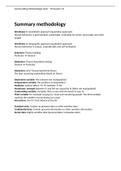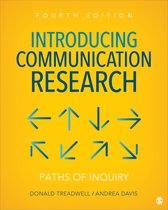Samenvatting
Methodology 2022 Fall Summary - Samenvatting (Alle belangrijke theorie voor tentamen!)
Deze samenvatting bevat alle belangrijke theorie die je moet kennen voor het tentamen. Alle hoofdstukken uit het boek die je moet kennen komen aan bod. This summary contains all the important theory you need to know for the exam. All chapters in the book that you need to know are covered.
[Meer zien]





